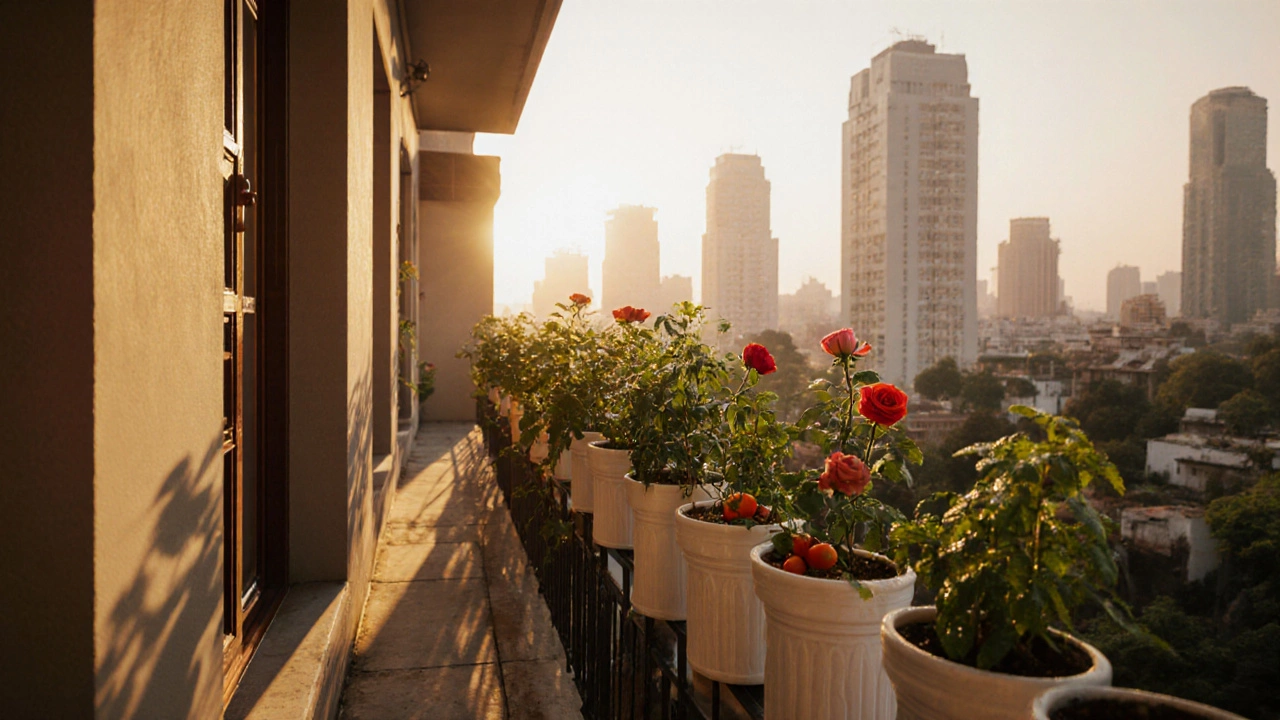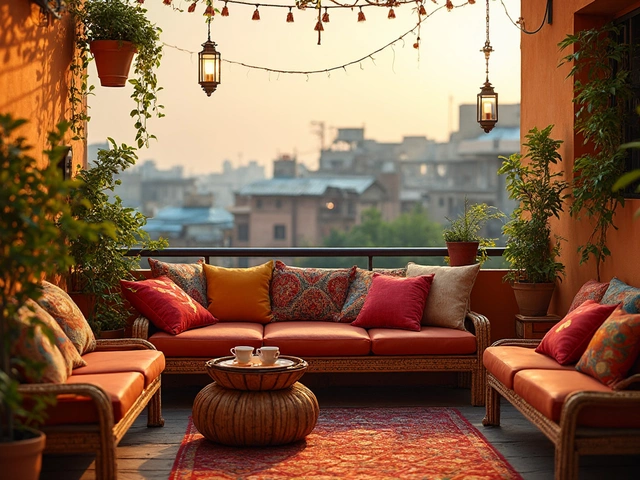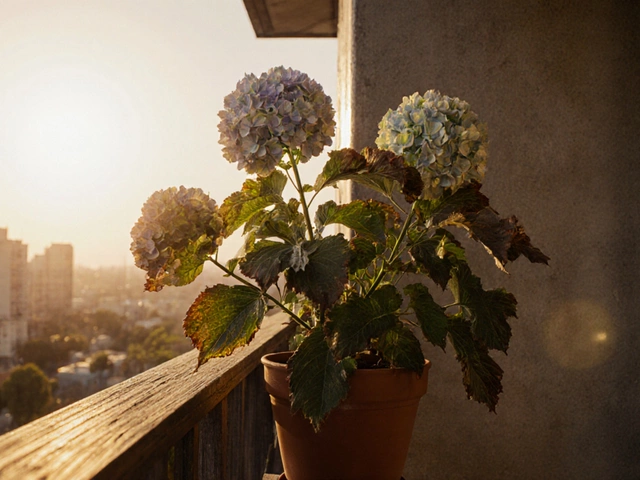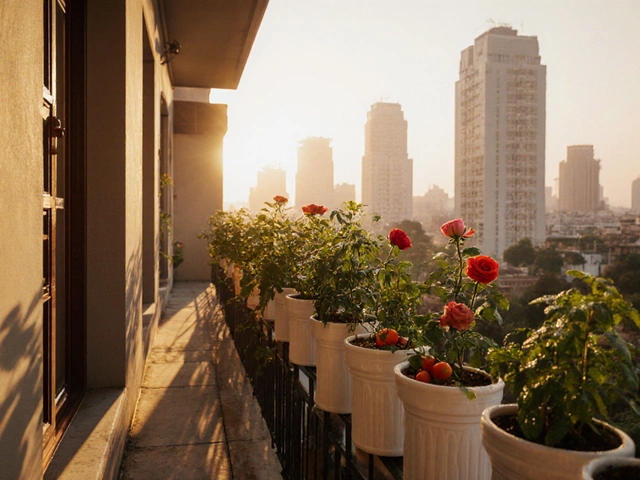Balcony Sunlight Calculator
Find Your Perfect Balcony Light Profile
Enter your balcony's orientation and location to estimate sunlight exposure and see which plants will thrive.
Input Your Details
Recommended Plants
When planning a balcony orientation is the first decision that determines how much natural light your garden will receive. The right facing can turn a cramped space into a thriving mini‑farm, while the wrong one leaves you with wilted herbs and sad seedlings.
Understanding Sun Paths
Sun path is the trajectory the sun follows across the sky during the day. In the northern hemisphere, the sun rises in the east, arcs toward the south at its highest point, and sets in the west. This arc shifts northward in summer and southward in winter, changing the angle and duration of sunlight on any surface.
Knowing the sun path helps you predict which part of your balcony will be bathed in direct light at different times of the year.
How Latitude Influences Sunlight
Latitude measures how far a location lies from the equator. The farther you are from the equator, the more pronounced the seasonal swing of the sun’s altitude. For example, a city at 45°N (like Chicago) experiences a low winter sun that barely climbs above the horizon, while a city at 30°N (like Dallas) enjoys a higher winter sun.
When you know your latitude, you can estimate the solar angle during the growing season and decide which direction will give you the longest daily exposure.
Cardinal Directions and Their Light Profiles
Cardinal direction refers to the four main points on a compass: north, east, south, and west. Each one offers a distinct light pattern:
- South‑facing balconies capture the most sun in the northern hemisphere, receiving 5‑7 hours of direct light in winter and up to 8‑10 hours in summer.
- East‑facing spaces get morning sun, ideal for plants that prefer gentle, cooler light.
- West‑facing balconies soak up the harsh afternoon sun, which can scorch tender leaves.
- North‑facing areas receive the least direct sunlight, usually only reflected or diffused light.
Choosing the best direction depends on the types of plants you plan to grow and the climate you live in.
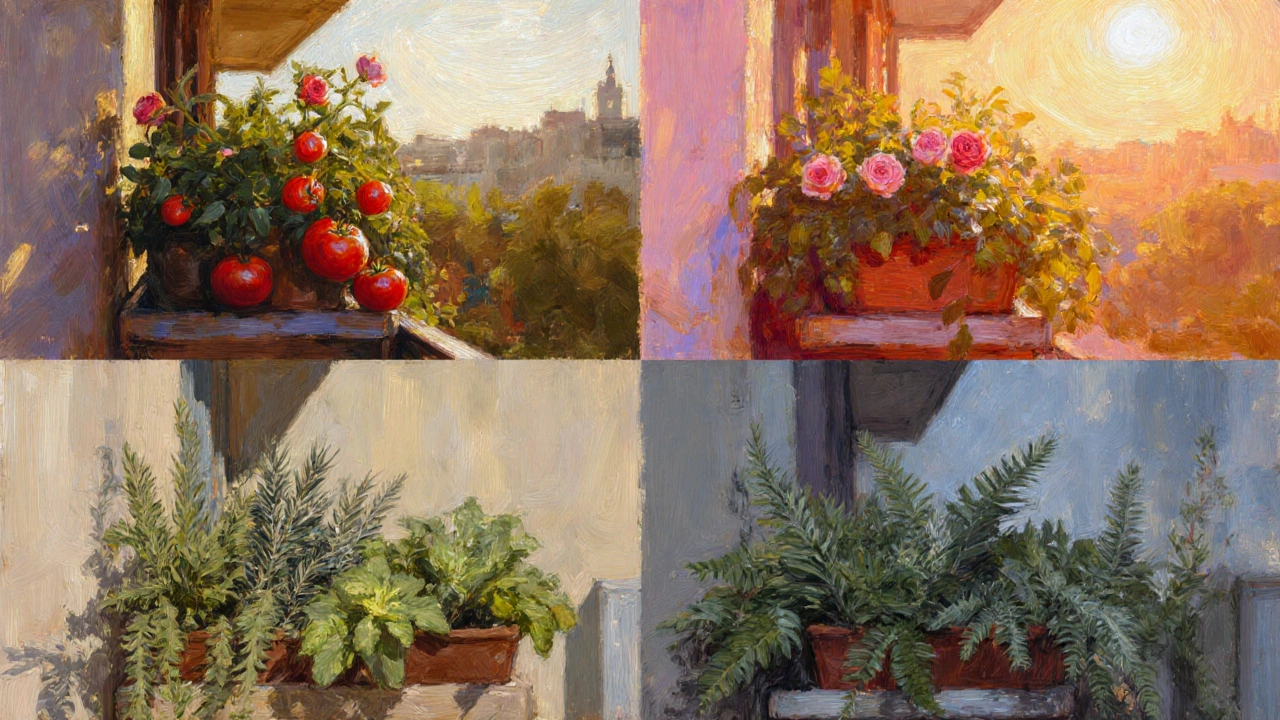
Seasonal Sunlight and Plant Light Requirements
Plant light requirement categorizes plants based on the amount of direct sunlight they need. Common categories are:
- Full sun - 6+ hours of direct light daily.
- Partial sun (or half‑sun) - 3‑6 hours of direct light, often morning or late afternoon.
- Shade‑tolerant - less than 3 hours of direct light, thriving on filtered illumination.
Match the balcony’s light profile with the plant’s needs. For instance, tomatoes, peppers, and most herbs need full sun, so a south‑ or west‑facing balcony is the safest bet in most temperate zones.
Comparing the Four Directions
| Direction | Winter Avg Hours | Summer Avg Hours | Best Plant Types |
|---|---|---|---|
| South | 5‑6 | 8‑10 | Full‑sun veggies, herbs, roses |
| East | 3‑4 (morning) | 5‑6 (morning) | Leafy greens, lettuce, early‑flowering annuals |
| West | 3‑4 (afternoon) | 6‑8 (intense afternoon) | Heat‑tolerant herbs (rosemary), succulents |
| North | 1‑2 (reflected) | 2‑3 (reflected) | Shade‑loving ferns, hostas, impatiens |
This table gives a quick snapshot, but local factors-like surrounding buildings or trees-can shift the numbers by a couple of hours.
Managing Shade and Reflections
Shading obstacle includes anything that blocks sunlight, such as neighboring balconies, awnings, or tall trees. If you have a south‑facing balcony but a large balcony overhead blocks the midday sun, you’ll need to adjust. Strategies:
- Use reflective surfaces (white walls, light‑colored railings) to bounce extra light onto plants.
- Employ vertical gardening (trellises, hanging pots) to bring foliage into the brighter zones.
- Choose compact, low‑light‑tolerant varieties for the shadier corners.
Conversely, an east‑facing balcony that receives excess reflected heat from a glass building can benefit from a light shade cloth to prevent overheating.
Solar Angle and Its Practical Impact
Solar angle (or solar elevation) is the height of the sun above the horizon at a given time. In summer, the angle can exceed 70°, delivering intense, direct rays. In winter, it may drop below 30°, resulting in longer shadows.
Design your plant layout to match the angle: tall, sun‑loving plants at the back for summer, shorter shade‑tolerant species in front for winter.
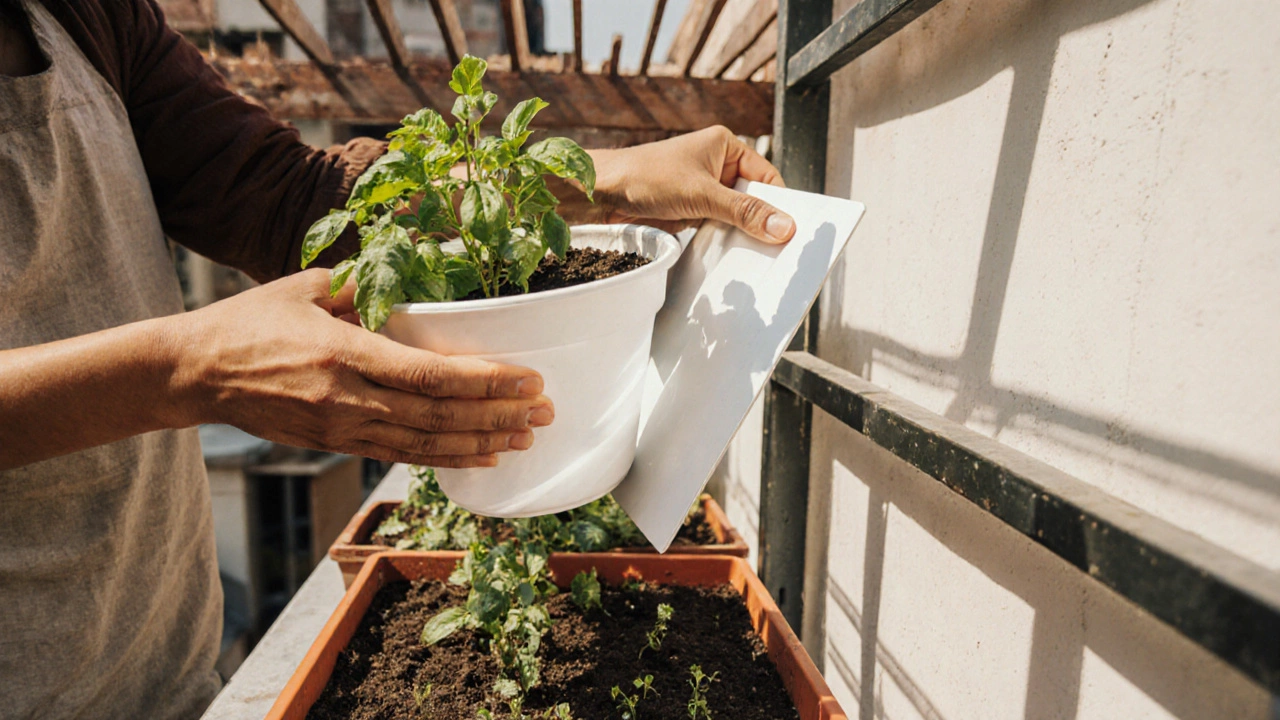
Practical Tips to Maximize Light Year‑Round
- Orient movable containers so they can be rotated with the sun’s movement.
- Use lightweight, reflective pots (white or light gray) to increase albedo.
- Install a small, adjustable pergola or slatted shade that can be opened for winter sun and closed for summer heat.
- Consider a grow light supplement during the darkest months if your balcony direction limits natural light.
These tweaks let you fine‑tune the light environment without rebuilding the balcony.
Common Mistakes and How to Fix Them
Many balcony gardeners start with the wrong assumption that any direction works if they add “more plants”. Here are frequent errors:
- Overcrowding: Too many pots block each other, creating micro‑shadows. Space containers at least 30cm apart.
- Ignoring wind: South‑facing balconies on coastal sites can be windy, drying soil fast. Use windbreaks or heavier pots.
- Choosing the wrong plants: Planting sun‑requiring tomatoes on a north‑facing balcony yields poor harvests. Swap to shade‑tolerant herbs like mint.
Re‑evaluate your layout each season and adjust accordingly.
Step‑by‑Step Checklist for New Balcony Gardeners
- Determine your balcony’s exact compass direction using a smartphone compass app.
- Record your latitude (found on a quick Google search).
- Map the sun path for your location (many free online tools show hourly sun charts).
- Match plant light requirements to the estimated daily sun hours.
- Plan pot placement to avoid shading and to capture the highest solar angle.
- Install reflective or shade‑adjusting accessories as needed.
- Monitor plant growth and adjust orientation or plant selection after the first month.
Following these steps saves time, money, and frustration.
Frequently Asked Questions
Can I grow full‑sun vegetables on an east‑facing balcony?
It’s possible, but you’ll get only morning sun. Choose fast‑maturing varieties like lettuce, radishes, or spinach, which thrive with 3‑5 hours of light. For slower‑growers like tomatoes, a south or west orientation is safer.
How does a balcony’s latitude affect the choice between south and west facing?
At lower latitudes (below 35°N), both south and west receive ample high‑angle sun, so you can pick based on wind or view preferences. At higher latitudes (above 45°N), a south‑facing balcony yields noticeably longer winter sun, making it the better choice for year‑round crops.
Do reflective walls really increase light for a north‑facing balcony?
Yes. A light‑colored wall can bounce up to 20% more diffuse light onto plants, enough to improve the growth of shade‑loving herbs and foliage. Just keep the surface clean to maintain reflectivity.
Should I use grow lights on a north‑facing balcony?
A supplemental LED grow light set on a timer (12‑14hours) can bridge the gap for leafy greens or herbs. Choose a full‑spectrum LED and place it 30‑45cm above the canopy for even coverage.
How often should I rotate my containers to follow the sun?
Rotate pots 45°-90° every two weeks during the growing season. This ensures all sides receive balanced light and reduces leaning or uneven growth.
